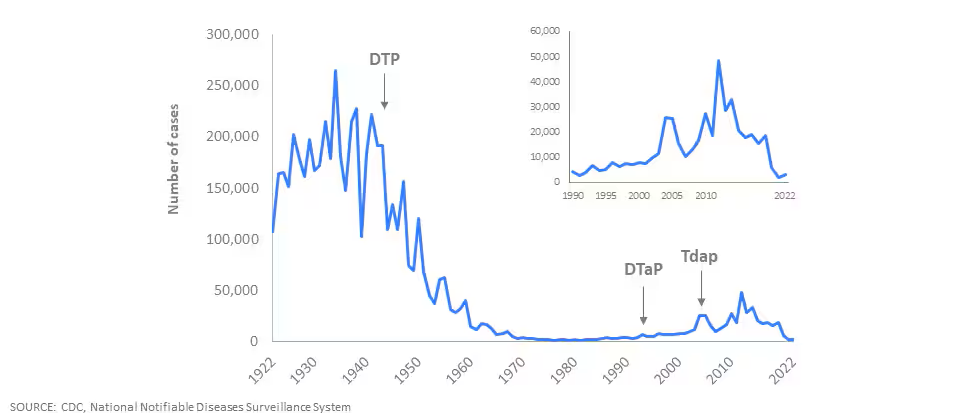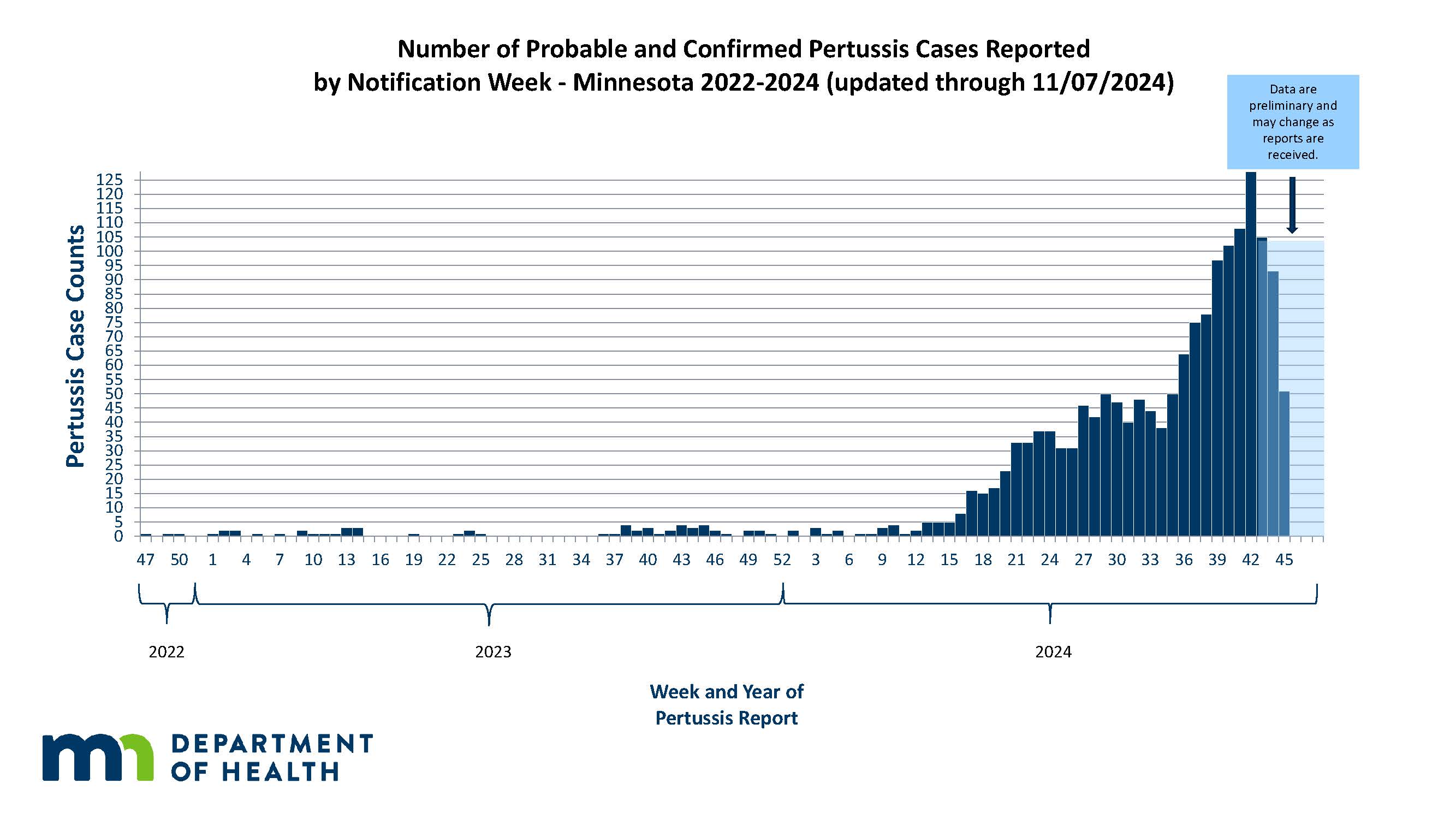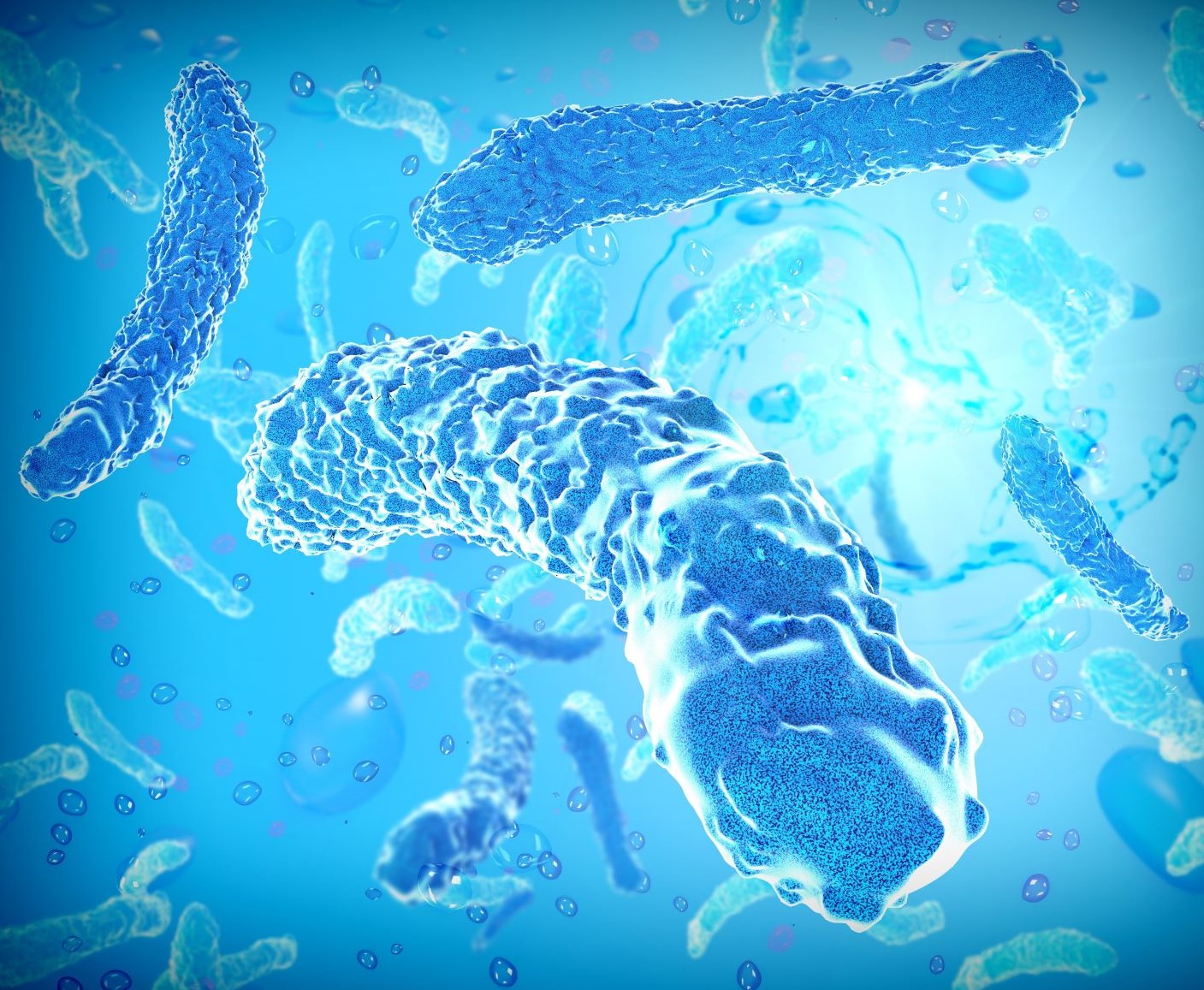2024 Public Health Laboratory Annual Report
Lab Tackles Pertussis, Candida Auris, Legionnaires’ Disease
Minnesota Infectious Disease Laboratory deals with threats caused by bacteria, fungi, and other microscopic pathogens. Often the unit must adapt quickly to counter outbreaks and emerging diseases.
Pertussis, aka whooping cough
 Pertussis, also known as whooping cough, is a very contagious bacterial illness that causes coughing that can last for months. Because pertussis is now rare, hospitals and other health care facilities do not have the capacity to test for it. If a facility suspects a patient has pertussis, it must send samples to the Infectious Disease Laboratory. The lab analyzes the samples for the bacteria that causes pertussis, Bordetella pertussis (pictured, right). It does so by creating cultures of specimens on agar plates, a technique that no other laboratories in Minnesota use. If the lab’s scientists find the bacteria, a diagnosis is sent to the relevant health care providers.
Pertussis, also known as whooping cough, is a very contagious bacterial illness that causes coughing that can last for months. Because pertussis is now rare, hospitals and other health care facilities do not have the capacity to test for it. If a facility suspects a patient has pertussis, it must send samples to the Infectious Disease Laboratory. The lab analyzes the samples for the bacteria that causes pertussis, Bordetella pertussis (pictured, right). It does so by creating cultures of specimens on agar plates, a technique that no other laboratories in Minnesota use. If the lab’s scientists find the bacteria, a diagnosis is sent to the relevant health care providers.
Pertussis is one of the many diseases that became much less common after a vaccine was introduced. The below chart, courtesy of the Centers for Disease Control and Prevention (CDC), shows the number of pertussis cases per year in the United States, with notations for the years that the vaccines DTP, DTaP and Tdap were introduced:
Reported pertussis cases in the United States, 1922-2022

The surge in cases around 2010 was due to a failure in the vaccine that had been given to Americans who were teenagers around 2010. Boosters were given to that group, and pertussis case numbers fell in the years to follow.
However, 2024 has seen a surprising upsurge in pertussis cases in Minnesota:

It is too early to make conclusions based on the recent increase in pertussis cases, which has been observed throughout the United States. However, a few contributing factors may be:
- The regular cycling of pertussis cases every 3-5 years.
- Lower herd immunity because of delays in getting pertussis vaccines during the COVID-19 pandemic.
The American public health system is currently investigating whether these factors or others are the causes of the outbreak. Along with diagnosis, the Minnesota Infectious Disease Laboratory conducts surveillance of Bordetella pertussis. This entails gathering data about each positive specimen and sending it to the CDC. Then the CDC and a network of state laboratories analyze the data to discover the best way to combat outbreaks.
Candida auris
Candida auris is a type of yeast that tends to be resistant to antifungal medications. If it is not curtailed by medications, it can infect the bloodstream and lead to severe illness.
People who have other serious medical conditions are especially susceptible to Candida auris. It often spreads through health care facilities, including long term care facilities. According to the CDC, the number of cases is increasing each year.
 When a resident at a health care facility tests positive for Candida auris, MDH epidemiologists contact the facility to suggest and initiate “colonization testing.” In an infectious disease context, “colonization” means that a pathogen is present in a subject, but not necessarily that the subject is infected. The Minnesota Public Health Laboratory has expertise and capacity to test appropriate residents of a given facility for colonization with Candida auris. Testing is done to understand whether the Candida auris is resistant to any of the patient’s medications. Additionally, the lab conducts whole-genome sequencing to better understand specific genetic characteristics of the Candida auris in question.
When a resident at a health care facility tests positive for Candida auris, MDH epidemiologists contact the facility to suggest and initiate “colonization testing.” In an infectious disease context, “colonization” means that a pathogen is present in a subject, but not necessarily that the subject is infected. The Minnesota Public Health Laboratory has expertise and capacity to test appropriate residents of a given facility for colonization with Candida auris. Testing is done to understand whether the Candida auris is resistant to any of the patient’s medications. Additionally, the lab conducts whole-genome sequencing to better understand specific genetic characteristics of the Candida auris in question.
The Minnesota Infectious Disease Laboratory handles colonization testing not only for Minnesota health care facilities, but also those of Arkansas, Iowa, Kansas, Missouri, Nebraska, North Dakota, Oklahoma, and South Dakota. This work falls under the lab’s position of leadership in the Antimicrobial Resistance Laboratory Network. The AR Lab Network is on the front line of the country’s defense against antimicrobial-resistant organisms, like many strains of Candida auris, that pose great threats to American health because they may not be adequately controlled through medications in all settings.
Legionnaires’ disease
 Grand Rapids, Minnesota, saw an outbreak of Legionnaires’ disease in February 2024. Legionnaires’ disease is a relatively rare pneumonia caused by the Legionella bacteria. It can be treated by antibiotics but must be detected early to avoid serious health problems. On average, one out of ten people who contract Legionnaires’ disease will die from the infection. Nationally, the disease has become increasingly common in the last few years: See the CDC’s Legionellosis Surveillance and Trends page for more information.
Grand Rapids, Minnesota, saw an outbreak of Legionnaires’ disease in February 2024. Legionnaires’ disease is a relatively rare pneumonia caused by the Legionella bacteria. It can be treated by antibiotics but must be detected early to avoid serious health problems. On average, one out of ten people who contract Legionnaires’ disease will die from the infection. Nationally, the disease has become increasingly common in the last few years: See the CDC’s Legionellosis Surveillance and Trends page for more information.
The Minnesota Infectious Disease Laboratory is one of the few facilities in the Midwest that can respond rapidly to an outbreak of Legionnaires’ disease. Scientists in the Microbiology Unit processed around 270 specimens from the Grand Rapids area and sent them to the Sequencing and Bioinformatics Unit. Using whole-genome sequencing, PHL scientists then linked individual cases and isolates from the environment based on related gene profiles. Their investigation helped partners better understand where the Legionella was occurring in their water systems.
Return to the main 2024 Annual Report page.